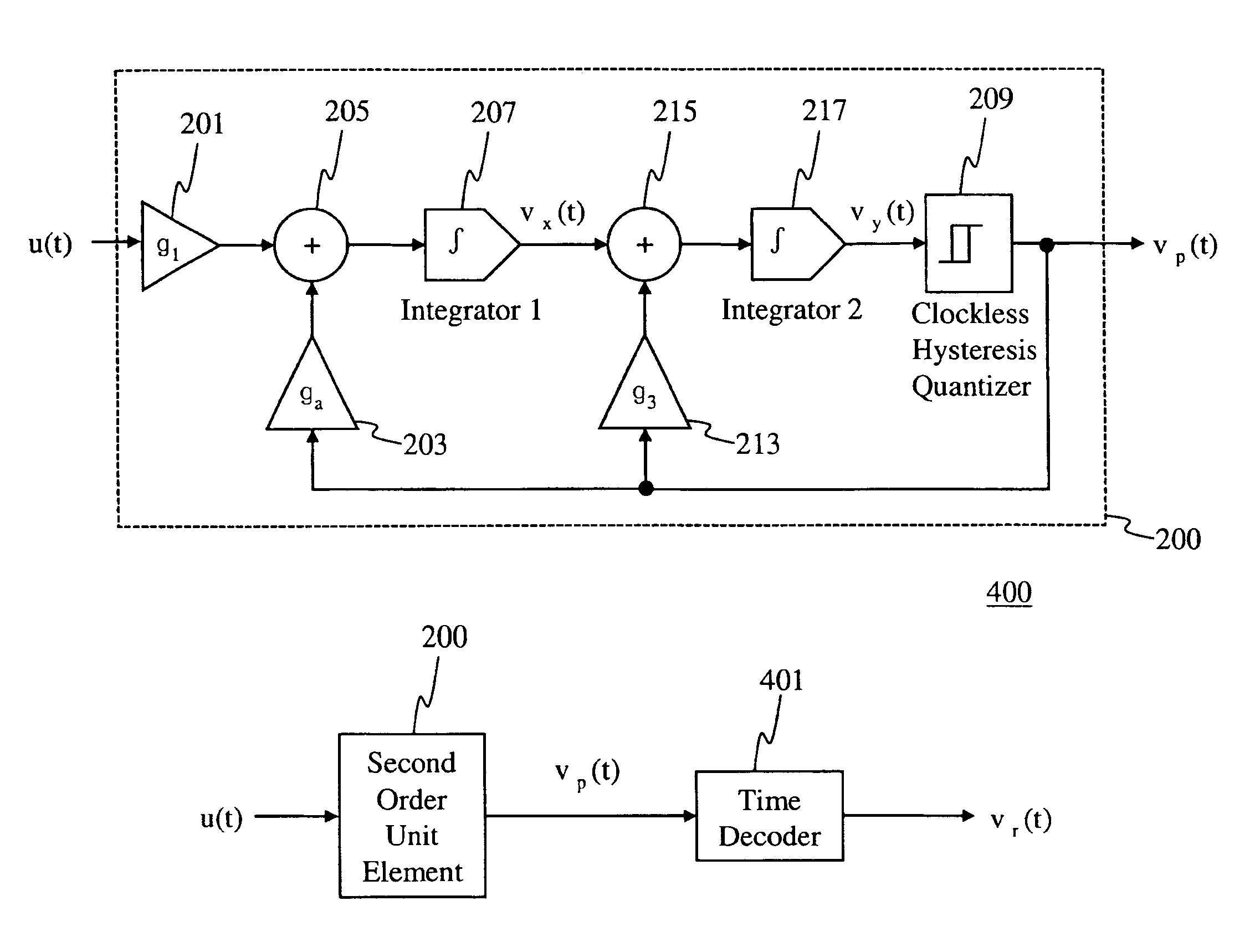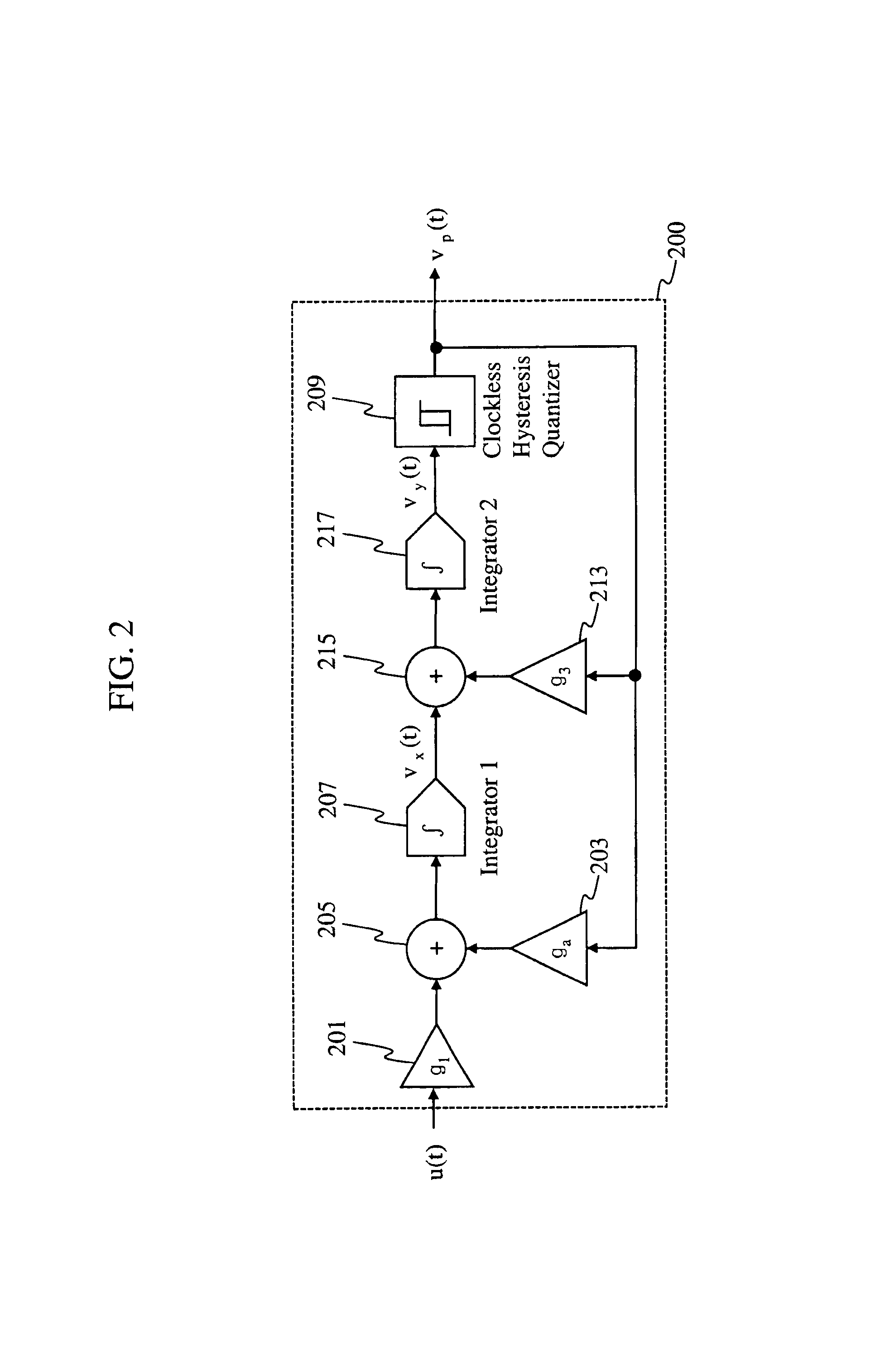Pulse domain encoder and filter circuits
- Summary
- Abstract
- Description
- Claims
- Application Information
AI Technical Summary
Benefits of technology
Problems solved by technology
Method used
Image
Examples
Embodiment Construction
[0034]The following description pertains to ordinary differential equations and systems of coupled first order linear ordinary differential equations or higher order linear ordinary differential equations that may be written as systems of coupled first order linear ordinary differential equations.
[0035]A first embodiment of the present invention provides a second order unit element circuit that is used to solve differential equations in the pulse domain. The circuit of the first embodiment is referred to as an encoder circuit. The encoder circuit computes an arbitrary first order differential equation with the solution projected in the time domain via a pulse output. The encoder circuit of the first embodiment does not require any analog feedback amplifier for performing this computation. All the internal feedback signals are pulse asynchronous signals being defined with just two amplitude levels. Simple 1-bit Digital to Analog Converters (DACs) are used in the feedback circuit. Gai...
PUM
 Login to View More
Login to View More Abstract
Description
Claims
Application Information
 Login to View More
Login to View More - R&D
- Intellectual Property
- Life Sciences
- Materials
- Tech Scout
- Unparalleled Data Quality
- Higher Quality Content
- 60% Fewer Hallucinations
Browse by: Latest US Patents, China's latest patents, Technical Efficacy Thesaurus, Application Domain, Technology Topic, Popular Technical Reports.
© 2025 PatSnap. All rights reserved.Legal|Privacy policy|Modern Slavery Act Transparency Statement|Sitemap|About US| Contact US: help@patsnap.com



